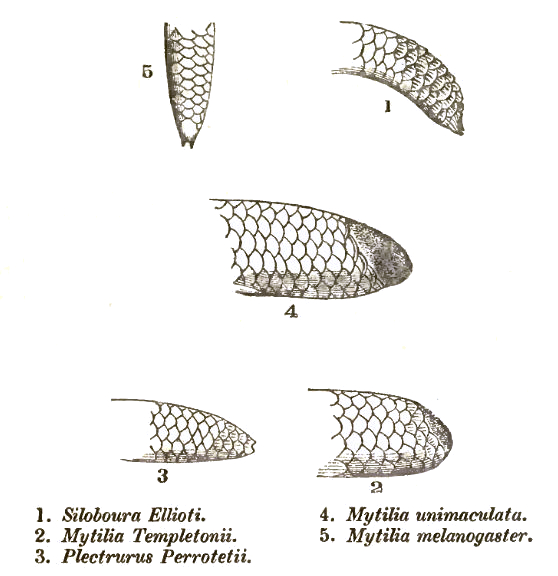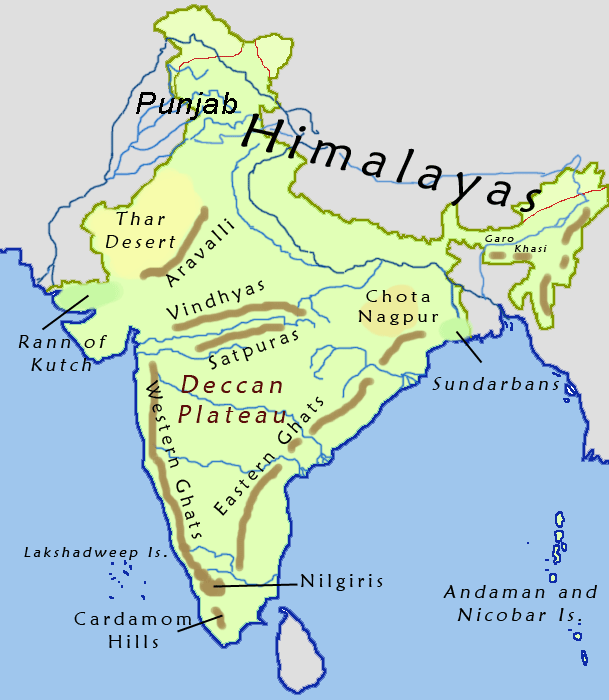|
Rhinophis
:''Common names:'' ''shield-tail snakes'', ''earth snakes'' ''Rhinophis'' is a genus of nonvenomous shield-tail snakes found in Sri Lanka and South India. Currently, 24 species (with no subspecies) are recognized in this genus. Of the 24 species, 18 are endemic to Sri Lanka, while six are endemic to South India. Geographic range Found mainly in Sri Lanka and also in southern India. In Sri Lanka, this genus also occurs in low plains in the dry zone. Species *) Not including the nominate subspecies. ) Type species In International_Code_of_Zoological_Nomenclature, zoological nomenclature, a type species (''species typica'') is the species name with which the name of a genus or subgenus is considered to be permanently taxonomically associated, i.e., the spe .... References External links * * Aengals, R.; S. R. Ganesh 2013. Rhinophis goweri — A New Species of Shieldtail Snake from the Southern Eastern Ghats, India. Russ. J. Herpetol. 20 (1): 61-65. * Ganesh, S. R. 2015. S ... [...More Info...] [...Related Items...] OR: [Wikipedia] [Google] [Baidu] |
Rhinophis Blythii
:''Common names:'' ''shield-tail snakes'', ''earth snakes'' ''Rhinophis'' is a genus of nonvenomous Uropeltidae, shield-tail snakes found in Sri Lanka and South India. Currently, 24 species (with no subspecies) are recognized in this genus. Of the 24 species, 18 are endemic to Sri Lanka, while six are endemic to South India. Geographic range Found mainly in Sri Lanka and also in southern India. In Sri Lanka, this genus also occurs in low plains in the dry zone. Species *) Not including the Subspecies#Nominotypical subspecies and subspecies autonyms, nominate subspecies. T) Type species. References External links * * Aengals, R.; S. R. Ganesh 2013. Rhinophis goweri — A New Species of Shieldtail Snake from the Southern Eastern Ghats, India. Russ. J. Herpetol. 20 (1): 61-65. * Ganesh, S. R. 2015. Shieldtail snakes (Reptilia: Uropeltidae)– the Darwin's finches of south Indian snake fauna? Manual on Identification and Preparation of Keys of Snakes with Special Reference ... [...More Info...] [...Related Items...] OR: [Wikipedia] [Google] [Baidu] |
Rhinophis Sanguineus
''Rhinophis sanguineus'', commonly known as the salty earth snake, is a species of Uropeltidae, uropeltid snake found in the Western Ghats of India. Description Description after Beddome (1864: 178): "Scales of the body large, in 15 rows; of the anterior portion of the trunk sometimes in 17; rostral much produced, very sharp, conical, horny, produced back, and covering the conjunction of the nasals; nostril in front of nasal shield; eye very small and obscure, [located] in front [portion] of ocular shield; four upper labials, 1st small, 2nd, 3rd, and 4th large; caudal disk nearly as long as tail, oblong, covered with excrescences, a red streak down the centre and one on each side. Colour of the body bluish black; belly bright red, with blackish mottlings; anal bifid; subcaudals of the male 9 or 10 pairs, each with 4 to 6 keels, and some of the approximated ventral plates and a few of the two lowest rows of scales also keeled; female subcaudals 6 or 7. Total length of large male 1 ... [...More Info...] [...Related Items...] OR: [Wikipedia] [Google] [Baidu] |
Rhinophis Fergusonianus
''Rhinophis fergusonianus'', commonly known as the Cardamom Hills earth snake, is a species of uropeltid snake endemic to the Western Ghats, India. Etymology The specific name, ''fergusonianus'', is in honor of Scottish zoologist Harold S. Ferguson. Beolens, Bo; Watkins, Michael; Grayson, Michael (2011). ''The Eponym Dictionary of Reptiles''. Baltimore: Johns Hopkins University Press. xiii + 296 pp. . (''Rhinophis fergusonianus'', p. 89). Geographic range ''R. fergusonianus'' is only known from the type specimen collected in the Cardamom Hills in Travancore, a part of the southern Western Ghats in modern Kerala, southeastern India. Description The holotype of ''R. fergusonianus'' measures in total length (including tail), 40 times its width. The eyes are very small. The snout is acutely pointed. The body is longitudinally striated. It is blackish above, and the sides are white, dotted and spotted with black. The belly is white, with black dots and two series of large blac ... [...More Info...] [...Related Items...] OR: [Wikipedia] [Google] [Baidu] |
Rhinophis Erangaviraji
''Rhinophis erangaviraji'', also known commonly as Eranga Viraj's shieldtail snake, is a species of snake in the family Uropeltidae. The species is endemic to Sri Lanka, where it was discovered in the Rakwana area of Matara District. Habitat The preferred natural habitats of ''R. erangaviraji'' are forest and grassland, at altitudes of , but it has also been found in disturbed areas such as tea plantations and home gardens. Description The species ''R. erangaviraji'' is easily distinguished from other shieldtails in Sri Lanka through colour variations. The head is black, with yellow irregular spots. The eyes are black. The body is black dorsally, with some yellow irregular patches. The ventral surface is cream-colored, with a stripe running along the vent region. The tail shield is black with small spines on it, which help to gather sand particles. Juveniles are similar to adults, but with a darker head and a paler body. The largest paratype specimen has a snout-to-vent len ... [...More Info...] [...Related Items...] OR: [Wikipedia] [Google] [Baidu] |
Rhinophis Drummondhayi
''Rhinophis drummondhayi'', commonly known as Drummond-Hay's earth snake, is a species of snake in the family Uropeltidae. The species is endemic to Sri Lanka. Habitat The preferred natural habitat of ''R. drummondhayi'' is forest, at altitudes of , but it has also been found in agricultural habitats such as home gardens and tea pantations. Reproduction ''R. drummondhayi'' is ovoviviparous. Etymology The specific name, ''drummondhayi'', is in honor of Henry Maurice Drummond-Hay (1869–1932), who was a planter and naturalist in Ceylon (now Sri Lanka), and who was the son of Scottish ornithologist Colonel Henry Maurice Drummond-Hay Colonel Henry Maurice Drummond-Hay (7 June 1814 – 3 January 1896) was a Scottish naturalist and ornithologist. He was the son of Vice-Admiral Sir Adam Drummond, K.C.B., of Megginch Castle, Perthshire. In June 1832 he received his commission i ... (1814–1896). Beolens, Bo; Watkins, Michael; Grayson, Michael (2011). ''The Eponym Dictionary of R ... [...More Info...] [...Related Items...] OR: [Wikipedia] [Google] [Baidu] |
Rhinophis Goweri
''Rhinophis goweri'', also known as Gower's shieldtail snake, is a recently described, little-known species of snake of the family Uropeltidae. It is endemic to the Eastern Ghats of Tamil Nadu in South India. As per the IUCN it is a Critically Endangered snake species. Description ''Rhinophis goweri'' can be identified by the following combination of characters: midbody scale rows 17; convex caudal shield as long as or longer than shielded part of head; rostral not more than half as long as shielded part of head, separating prefrontal scales for more than half their length; ventral scales 215; venter and outermost scale rows without large spots; uniform dark grayish brown above and off-white heavily powdered with brown below; tail distinctly reddish orange below; dorsum uniform and unpatterned. Etymology This species was named after Dr. David Gower, a herpetologist with the Natural History Museum, London, for his work on these snakes. Geographic range This species was first de ... [...More Info...] [...Related Items...] OR: [Wikipedia] [Google] [Baidu] |
Rhinophis Dorsimaculatus
''Rhinophis dorsimaculatus'', commonly known as the polka-dot earth snake, is a species of snake in the Uropeltidae family. It is endemic to the scrub jungles of Sri Lanka Sri Lanka, officially the Democratic Socialist Republic of Sri Lanka, also known historically as Ceylon, is an island country in South Asia. It lies in the Indian Ocean, southwest of the Bay of Bengal, separated from the Indian subcontinent, ....Bamaradeniya, Channa N.B. ''The Fauna of Sri Lanka: Status of Taxonomy, Research and Conservation.'' Colombo, Sri Lanka: IUCN, 2006. 163. References Further reading * Deraniyagala, P.E.P. 1941. A new fossorial snake ''(Rhinophis dorsimaculatus)'' from Ceylon. J. Bombay Nat. Hist. Soc. 42 (4): 800–802. dorsimaculatus Snakes of Asia Reptiles of Sri Lanka Endemic fauna of Sri Lanka Reptiles described in 1941 Taxa named by Paulus Edward Pieris Deraniyagala {{Alethinophidia-stub ... [...More Info...] [...Related Items...] OR: [Wikipedia] [Google] [Baidu] |
Uropeltidae
The Uropeltidae, also Common name, commonly known as shield-tail snakes, shield-tailed snakes or earth snakes, are a Family (biology), family of primitive, nonvenomous, burrowing snakes native to Peninsular India and Sri Lanka. The name is derived from the Greek words ('tail') and ('shield'), indicating the presence of the large keratinous shield at the tip of the tail. Seven or eight Genus, genera are recognized, depending on whether ''Teretrurus rhodogaster'' is treated in its own genus or as part of ''Brachyophidium''. The family comprises over 50 species. These snakes are not well known in terms of their diversity, biology, and natural history. Description Snakes in the family Uropeltidae are small snakes, with adults growing to a total length (including tail) of . They are adapted to a fossorial way of life, which is apparent in their anatomy. The skull is primitive and inflexible, with a short, vertical quadrate bone and rigid jaws; the coronoid bone is still present in t ... [...More Info...] [...Related Items...] OR: [Wikipedia] [Google] [Baidu] |
Travancore
The kingdom of Travancore (), also known as the kingdom of Thiruvithamkoor () or later as Travancore State, was a kingdom that lasted from until 1949. It was ruled by the Travancore Royal Family from Padmanabhapuram, and later Thiruvananthapuram. At its zenith, the kingdom covered most of the south of modern-day Kerala ( Idukki, Kottayam, Alappuzha, Pathanamthitta, Kollam, and Thiruvananthapuram districts, major portions of Ernakulam district, Puthenchira village of Thrissur district) and the southernmost part of modern-day Tamil Nadu ( Kanyakumari district and some parts of Tenkasi district) with the Thachudaya Kaimal's enclave of Irinjalakuda Koodalmanikyam temple in the neighbouring kingdom of Cochin. However Tangasseri area of Kollam city and Anchuthengu near Attingal in Thiruvananthapuram were parts of British India. Malabar District of Madras Presidency was to the north, the Madurai and Tirunelveli districts of Pandya Nadu region in Madras Presidency ... [...More Info...] [...Related Items...] OR: [Wikipedia] [Google] [Baidu] |
North Western Province, Sri Lanka
North Western Province ( ''Wayamba Paḷāta'', ''Vada Mael Mākāṇam'') is a province of Sri Lanka. It is the fourth-largest province by land area, covering , and the fourth-most populated province with a population of over 2,592,000 people. North Western Province is bordered by the North Central Province, Sri Lanka to the north, Central Province, Sri Lanka to the east, Sabaragamuwa Province to the southeast, Western Province, Sri Lanka to the south, and is bounded by the Indian Ocean to the west. The province encompasses a variety of climates and geographical features, from its coastal regions to the central highlands and plains. The majority of the population is concentrated in the urban centers of Kurunegala, the provincial capital, and Puttalam. Kurunegala is the largest city in the province and serves as a major commercial and administrative hub. Puttalam, located on the western coast, is known for its lagoon and salt production. The region has numerous archaeolog ... [...More Info...] [...Related Items...] OR: [Wikipedia] [Google] [Baidu] |
Eastern Ghats
The Eastern Ghats is a mountain range that stretches along the East Coast of India, eastern coast of the Indian peninsula. Covering an area of , it traverses the states and union territories of India, states of Odisha, Telangana, Andhra Pradesh, Karnataka, and Tamil Nadu. The range forms a discontinuous chain of mountains along the eastern edge of the Deccan Plateau, stretching from north of the Mahanadi River in Odisha to Vaigai River in Tamil Nadu at the southern end of the peninsula. The Eastern Ghats meet the Western Ghats at the Nilgiris. The average elevation is around and Arma Konda is the highest peak in the mountains at . Geological evidence indicates that the mountains were formed during the archeozoic era and became part of the Indian subcontinent post the break-up of the supercontinent of Rodinia and the formation of Gondwana. The mountains were formed through further metamorphism during the mid-Proterozoic era. The northern section of the range has an elevation r ... [...More Info...] [...Related Items...] OR: [Wikipedia] [Google] [Baidu] |

